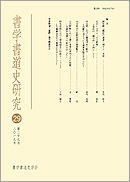2019 巻, 29 号
選択された号の論文の8件中1~8を表示しています
- |<
- <
- 1
- >
- >|
論文
-
2019 年 2019 巻 29 号 p. 1-14,106
発行日: 2019/10/31
公開日: 2020/01/31
PDF形式でダウンロード (3061K) -
2019 年 2019 巻 29 号 p. 15-30,106-105
発行日: 2019/10/31
公開日: 2020/01/31
PDF形式でダウンロード (6094K) -
2019 年 2019 巻 29 号 p. 31-44,105
発行日: 2019/10/31
公開日: 2020/01/31
PDF形式でダウンロード (2890K) -
2019 年 2019 巻 29 号 p. 45-58,104
発行日: 2019/10/31
公開日: 2020/01/31
PDF形式でダウンロード (4953K) -
2019 年 2019 巻 29 号 p. 59-71,104-103
発行日: 2019/10/31
公開日: 2020/01/31
PDF形式でダウンロード (3444K) -
2019 年 2019 巻 29 号 p. 73-87,103
発行日: 2019/10/31
公開日: 2020/01/31
PDF形式でダウンロード (2719K)
学界展望
-
2019 年 2019 巻 29 号 p. 89-100
発行日: 2019/10/31
公開日: 2020/01/31
PDF形式でダウンロード (2579K)
書評
-
2019 年 2019 巻 29 号 p. 101
発行日: 2019/10/31
公開日: 2020/01/31
PDF形式でダウンロード (1094K)
- |<
- <
- 1
- >
- >|
